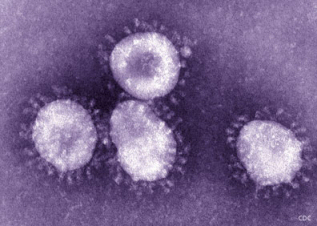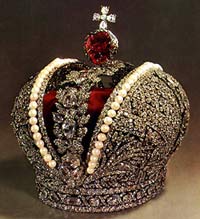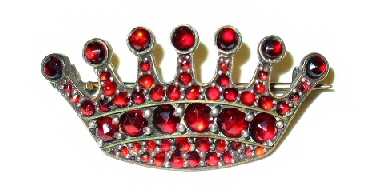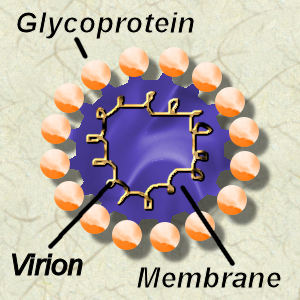A brief introduction to the regal world of
Coronaviridae

Coronavirus with their spiky glycoproteins, courtesy of
the voyeuristic CDC
Classification and Taxonomy:
The name Coronaviridae comes from the Latin corona meaning crown. The virus has glycoprotein spikes on itís surface which gives it the look of wearing a crown. Both Mark and Melanie have always been very confused by this analogy. When we see a crown, we thinks of something like this:

Certainly, this crown does not look
like our most favorite virus, albeit it is highly regal in nature. (Itís from

Wow-- looks much better! This picture makes it clear that when referring to a "Crown", we refer to the glycoprotein SPIKES which stick out, rather than assorted jewelry that is stuck to the crown. Mark now associates jewelry with viral proteins, which is rather disturbing.†

Structure:

Genome:
- Single-stranded RNA
- Positive sense
- Non-segmented
- Linear
- LARGE genome that is 32 kilobases and 25000-33000
nucleotides long
- Genome has 5í cap and 3í polyadenylated tail
4 major structural proteins:
1) nucleocapsid (N) protein
2) membrane (M) glycoprotein
3) spike (S) glycoprotein
4) envelope (E) protein
(group 2 coronaviruses also have a hemagglutinin-esterase (HE) glycoprotein)
Virion:
- Enveloped virion
- Helical nucleocapsid
- Pleomorphic
- 80-160 nm
- Spherical with glycoprotein spikes
Cornonaviruses that infect humans:
Genus coronavirus:
∑
Human Coronavirus (HCoV)
-HCoV 229E
-HCoV OC43
-SARS-CoV
-HCoV NL63
-CoV-HKU1
∑
Human Enteric
Genus torovirus:
∑ Human torovirus
Pathogenesis:
Involved mainly with respiratory tract illness but are also involved in enteric and central nervous system diseases. They are represented by 2 prototype strains, HCoV-229E and HCoV-OC43, which belong to antigenic groups 1 and 2, respectively.